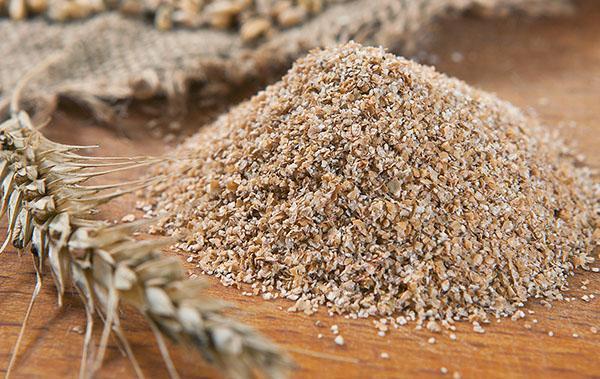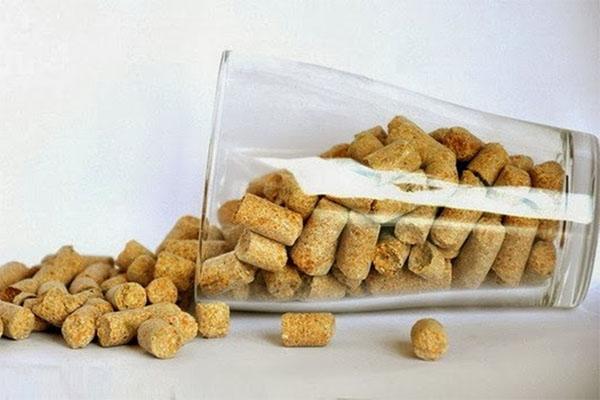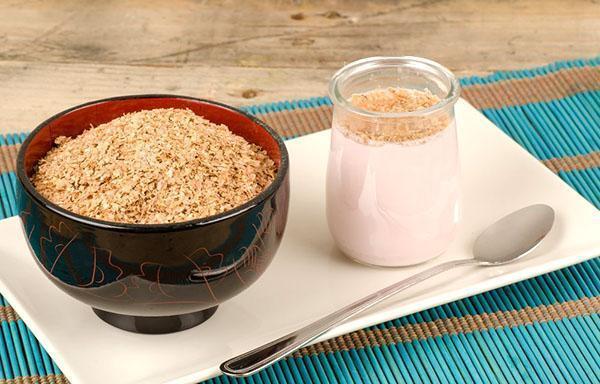What are the benefits and harms of wheat bran?
 Today, more and more adherents of a healthy diet decide to include wheat bran in their diet. It is a product obtained from the processing and production of grain crops. For a long time it was considered useless and was used only as animal feed. At the moment, a lot of information is already known about the benefits of wheat bran. Their use is recommended in many diets. With the help of wheat bran, the state of many diseases is normalized. However, in order for the intake of bran to bring only benefits, you need to know some features of the product.
Today, more and more adherents of a healthy diet decide to include wheat bran in their diet. It is a product obtained from the processing and production of grain crops. For a long time it was considered useless and was used only as animal feed. At the moment, a lot of information is already known about the benefits of wheat bran. Their use is recommended in many diets. With the help of wheat bran, the state of many diseases is normalized. However, in order for the intake of bran to bring only benefits, you need to know some features of the product.
Wheat bran: benefits and harms, how to take

The beneficial qualities of wheat bran are explained by the following chemical composition:
- vitamin A;
- potassium;
- vitamin E;
- magnesium;
- sodium;
- phosphorus;
- B vitamins;
- calcium;
- copper;
- fiber, as well as dietary fiber;
- proteins;
- iodine;
- fatty acid.
In stores you can see both granulated and non-granulated wheat bran. There is not much difference in them, if only the product is offered in pure form.
Regular bran is most often produced without any additives. But in the composition of granules, sugar, salt or even various odorants can often be present, designed to enhance the taste. Therefore, if you want the product to bring as much benefit as possible, then you should give preference to ground bran.
Why are wheat bran useful?
 The substances contained in the bran of wheat have a beneficial effect on the human body:
The substances contained in the bran of wheat have a beneficial effect on the human body:
- Once in the stomach, they increase in size, which causes a feeling of fullness. This property is especially important for those who want to lose excess weight. It also helps to eliminate all unnecessary from the intestines - toxins, mucus. This minimizes the likelihood of constipation, as well as the development of colon cancer. That is why wheat bran for constipation is recommended by many nutritionists.
- Fiber, which is contained in the grain shell in large quantities, allows you to get rid of dysbiosis. B vitamins stimulate the formation of gastric juice.
- Bran is known to help with problems of the heart and vascular system. The use of the product helps to normalize blood cholesterol levels. The likelihood of myocardial infarction or heart diseases such as arrhythmia, tachycardia decreases.
- Wheat bran, the composition of which is very diverse, is indispensable for problems of the gastrointestinal tract. Their use allows you to normalize the digestion process in the shortest possible time.
- In the fight against obesity, wheat bran, the calorie content of which is very low, will also help. Fiber will help cope with extra pounds, which contributes to the slow absorption of carbohydrates by the body. A feeling of satiety appears, it is already difficult to eat more than planned. Therefore, wheat bran for weight loss is a simple but effective remedy. At the same time, bran is also recommended for diabetes mellitus, since their use can significantly slow down the process of increasing glucose in the blood.
- Bran is equally beneficial for both the female and male body. Healthy fatty acids, namely Omega-3 and Omega-6, keep estrogen levels in a normal state. By adding a product to your diet, you will protect yourself from the occurrence of diseases such as breast cancer. Men, in turn, can normalize the functioning of the prostate gland.
Wheat bran: how to use
 Like oat or rye bran, wheat bran can be used as an additive in various dishes - salads, cocktails, jelly, minced fish, cereals and much more. However, for maximum benefit, it is worth sticking to a specific dosage of the product. It can be used as an independent therapeutic and prophylactic agent. There are two options for this:
Like oat or rye bran, wheat bran can be used as an additive in various dishes - salads, cocktails, jelly, minced fish, cereals and much more. However, for maximum benefit, it is worth sticking to a specific dosage of the product. It can be used as an independent therapeutic and prophylactic agent. There are two options for this:
- Soak the bran beforehand. Pour boiling water over a certain portion of bran and let it brew for 30 minutes. Then drain the excess liquid, and take the swollen bran as it is. They can also be added to cereals or other suitable meals.
- Take dry. Take the ground bran with plenty of water - at least 1 glass.
As with any product unfamiliar to the body, bran should be taken with caution. Increase your dose gradually. Start with 1 tsp. per day, keeping this volume for 2 weeks. Then you can increase the daily dose to 3 tsp. (one spoon three times a day).
Please note that the maximum volume is 4 spoons. This norm should not be violated, as you risk harming your body.
The course of admission should be at least two months. As soon as the benefits of using this product are noticeable, you should immediately begin to reduce the daily requirement.
Wheat bran for weight loss: how to take
 Wheat flakes are often recommended as a dietary product that allows you to lose weight in a short time. For this purpose, they should be consumed shortly before a meal, which will help to improve the functioning of the digestive system. As mentioned above, bran increases in volume when it enters the stomach, which helps to reduce appetite. There is a feeling of satiety, so nutritionists often urge to use them for dinner.
Wheat flakes are often recommended as a dietary product that allows you to lose weight in a short time. For this purpose, they should be consumed shortly before a meal, which will help to improve the functioning of the digestive system. As mentioned above, bran increases in volume when it enters the stomach, which helps to reduce appetite. There is a feeling of satiety, so nutritionists often urge to use them for dinner.  If you want to get the most out of your flakes, you can add them to low-fat yogurt or kefir. To do this, it is advisable to let them brew in boiling water so that they have time to swell.
If you want to get the most out of your flakes, you can add them to low-fat yogurt or kefir. To do this, it is advisable to let them brew in boiling water so that they have time to swell.
Regular consumption of wheat flakes can achieve a positive effect. However, it is very important not to exceed the daily dose and the maximum allowable course duration. Together with harmful toxins and slags, with prolonged intake of bran, useful substances will begin to be excreted from the body. This is fraught with many consequences, including calcium imbalances.
Contraindications to use
Despite its beneficial properties, bran can be harmful if taken in the presence of the following diseases:
- gastritis;
- problems with the duodenum;
- colitis;
- individual protein intolerance;
- postoperative period;
- stomach ulcer.
You should not give such cereals to children, since it is difficult for a growing body to cope with the digestion of such rough food. This product is also harmful for women who are carrying a fetus, as it helps to eliminate not only harmful, but also useful substances from the body.
If you do decide to take these bran regularly, it is very important to follow the correct drinking regimen. You should drink at least two liters of water a day (if you use 1 to 3 teaspoons of ground bran). To avoid serious consequences, before taking a course of wheat bran, it is worth consulting with a dietitian, healthcare professional or a healthy nutritionist.